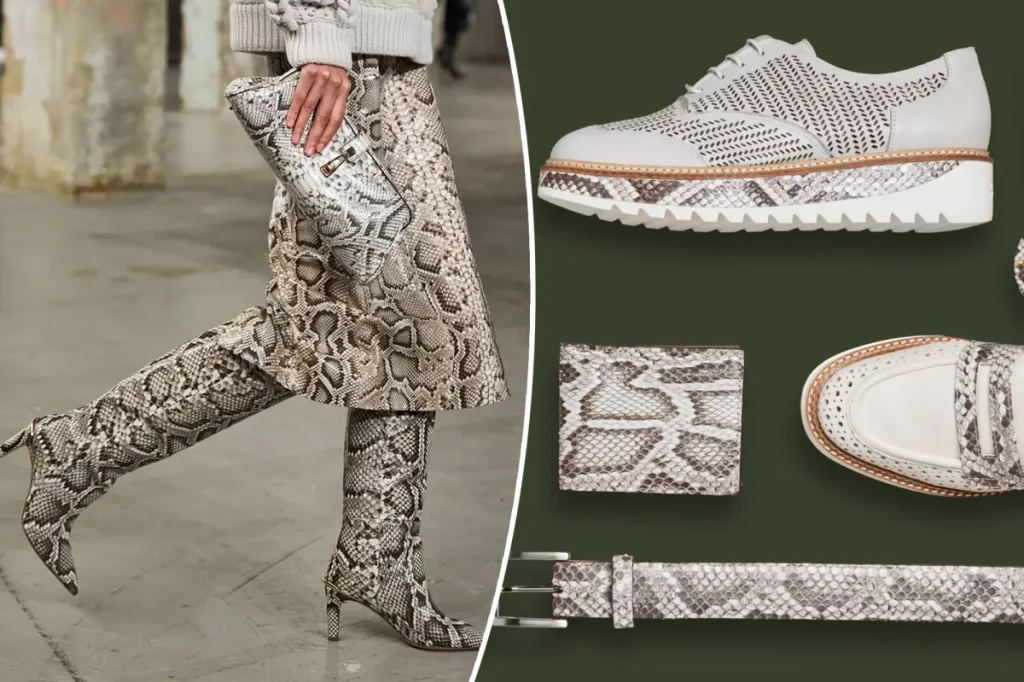Shopping to Save the Planet: Florida’s Fashionable Python Solution
In a bold move to tackle one of Florida’s most notorious ecological threats, Governor Ron DeSantis is championing an innovative approach that turns invasive Burmese pythons into high fashion. The Florida Fish and Wildlife Conservation Commission (FWC) has partnered with Miami-based textiles manufacturer Inversa to transform these destructive predators into luxury leather goods. This initiative represents a creative solution to an environmental crisis that has plagued the Everglades for decades, while simultaneously creating sustainable, ethical fashion products. Between May and July 2025 alone, this program removed 1,022 pythons—nearly triple the number caught during the same period in 2024. “The new program accomplished more removals in July 2025 alone than in the entire year before,” DeSantis proudly announced, highlighting the remarkable efficiency of this public-private partnership.
The environmental threat posed by Burmese pythons in Florida cannot be overstated. Introduced through the illegal pet trade in the 1970s, these massive snakes established breeding populations in the Everglades and have since wreaked havoc on the delicate ecosystem. “These things will take out a deer,” DeSantis explained. “It’s unbelievable what they’re able to do. A single python can threaten the survival of many endangered species.” Inversa estimates that each removed python helps protect up to 460 native animals that would otherwise become prey, while improving the survival chances of 39 endangered species. This environmental impact makes the fashion initiative not just a luxury goods program, but a critical conservation effort with measurable ecological benefits.
At a time when many fashion giants are banning exotic leathers due to ethical concerns, Inversa is pioneering what CEO Aarav Chavda calls “ethical exotics.” Founded in 2020, the company doesn’t merely process python hides—they’ve created an entire ecosystem around sustainable harvesting. Inversa contracts approximately 50 professional python hunters who previously worked under the FWC, essentially building their own specialized removal team. This approach has not only increased removal effectiveness but has also benefited the hunters themselves, who have seen their pay increase by about 60% through this partnership. Additionally, the program has reduced the FWC’s administrative workload by 89%, creating efficiencies across the board. Henri Ferré, Inversa’s head of development, explained that “Inversa’s priority with this public-private partnership is to remove as many pythons as possible while defraying the taxpayer’s burden, who, without the help of the fashion industry, would front 100% of the cost of removals and management.”
The fashion industry has embraced these ethical python products with enthusiasm, bringing sustainability to luxury in an unprecedented way. Inversa’s Florida python garments have already made appearances on prestigious runways, with models in the Gabriela Hearst and KHAITE 2025 fall shows sporting python jackets, handbags, and accessories. Hearst, renowned for her commitment to sustainable and ethical production, was among the first designers to collaborate with Inversa, calling the company a “game-changer” in a Vogue interview. These high-end applications demonstrate that conservation-driven materials can coexist with luxury fashion, potentially changing how the industry approaches exotic leathers. While traditional python farming raises ethical concerns, Inversa’s model actually benefits ecosystems by removing harmful invasive species, creating a virtuous cycle where fashion consumption contributes to environmental restoration.
The success of this initiative goes beyond fashion and ecological benefits—it represents a new model for addressing invasive species challenges through market-driven solutions. Previously, Florida had experimented with python skin products like the Damascus Cuff with Python Inlay that retails for $1,095, but the partnership with Inversa has dramatically scaled these efforts. According to Ferré, fashion brands are increasingly seeking these types of materials to meet their sustainability goals, creating a growing market for conservation-derived products. This model could potentially be replicated for other invasive species challenges across the country, demonstrating how consumer markets can be harnessed for environmental benefits. FWC Chairman Rodney Barreto emphasized the long-term impact: “Our partnership with Inversa and the Python Action Team Removing Invasive Constrictors (PATRIC) program highlights the milestones we’ve achieved against the invasive Burmese Python, which will benefit generations to come.”
This innovative approach to conservation through consumption represents a paradigm shift in how we might tackle environmental challenges. By turning ecological threats into desirable products, Florida has found a way to align economic incentives with environmental goals. The python removal program creates jobs, produces luxury goods, reduces taxpayer burden, and most importantly, helps restore the Everglades ecosystem. Governor DeSantis, noting the unexpected stylishness of the products, remarked, “It’s been a pleasant surprise to see the progress. I will tell you some of the stuff is very fashionable.” This convergence of fashion and conservation demonstrates that environmental protection doesn’t always have to come at an economic cost—sometimes, with creativity and collaboration, protecting the planet can become a fashionable pursuit. As consumers increasingly demand sustainable and ethical products, Florida’s python program offers a compelling template for turning ecological problems into economic and environmental solutions.


